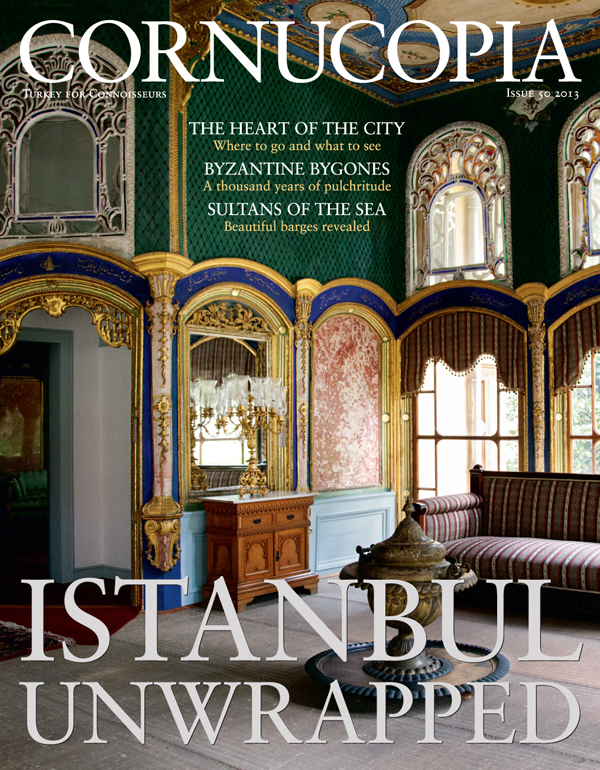Buy or gift a stand-alone digital subscription and get unlimited access to dozens of back issues for just £18.99 / $18.99 a year.
Please register at www.exacteditions.com/digital/cornucopia with your subscriber account number or contact subscriptions@cornucopia.net
Buy a digital subscription Go to the Digital EditionA vast and newly revealed 17th-century panorama of Istanbul is a lovingly drawn record of the city. Yet the accompanying text castigates the Ottoman capital as the ‘whore of Babylon’. Christine Thomson turns detective and reveals it as an elaborate piece of anti-Ottoman propaganda designed by a Franciscan friar
An important missing panorama of Istanbul, a rare image of the city from the troubled years of the early 1600s, has recently [1997] been unveiled amid the frescoed splendours of the Vatican and is on view as you leave the Sistine Chapel. The panorama is on loan from the Vatican Library.
The work shows Istanbul across the Golden Horn from Pera or Galata on the “Christian” bank, throwing new light on both the city and the relationship between the rival Venetian Republic and Ottoman empire. It also trumpets the unalloyed Christian zeal of Nicolo Guidalotto.
Until now the two most important early panoramas of Istanbul were those by Vavassore in the late 15nth century and by Melchior Lorich [Lorck] a century later. Both were made at high points in Ottoman history and both convey the magnificence of the city through accurate topographical observation.
Guidalotto’s is very different. This is a map with a message in the medieval or Renaissance sense, and the message is one of anger. Using alegory, biblical quotations and panels of text, he accuses the Turks, during their 200-year tenure, of turning the city of Constantine from the New Rome into the new Babylon. This is religious hyperbole and, by any historical yardstick, quite false. But the Ottoman Empire was locked in a struggle for the possession of Crete, and the first casualty in any war is truth…
Guidalotto’s panorama is nothing short of a call for a full-blooded Crusade…
Beyond the towering Black Sea Mountains lies a hidden landscape rich with forgotten medieval churches. For centuries they were ignored, their ancient glories allowed to crumble to dust. Before new roads reached the Coruh Valley, Brian Sewell had to enlist the help of shepherds on his quest to find these forerunners of Romanesque and Gothic architecture.
In the rain forests of Turkey’s Black Sea Mountains, where jackals howl and the River Firtina (the Storm) crashes towards the Black Sea, live the Hemşinli people, who were here when Jason came in search of the Golden Fleece. In more recent years they prospered as bakers and restaurateurs in Tsarist Russia, returning to their beautiful, haunting country houses hidden in the hills east of Trabzon. Patrica Daunt visits one family and shares their memories of a Chekovian rural life.
Also see Cornucopia 34, Land of a Thousand Mansions
For centuries the masters of great dishes have owed their success to the egg. It both combines and flatters.
More cookery features
Outside the seraglio, away from the discreet charm of the bourgeoisie, the Turkish interior is a source of inspiration for modern designers: ergonomic, minimalist, refreshingly white-washed.







Bezmärä Ensemble


Cornucopia works in partnership with the digital publishing platform Exact Editions to offer individual and institutional subscribers unlimited access to a searchable archive of fascinating back issues and every newly published issue. The digital edition of Cornucopia is available cross-platform on web, iOS and Android and offers a comprehensive search function, allowing the title’s cultural content to be delved into at the touch of a button.
Digital Subscription: £18.99 / $18.99 (1 year)
Subscribe now